BEA15: Still in Flux
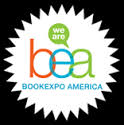 Many of the familiar elements of ABA and BEA shows past were present at BookExpo America at the Javits Center in New York City last week. There were well-attended panels, conferences, award presentations, book & author breakfasts, author signings, business meetings of all kinds, a range of parties, the ABA's annual meeting and other events.
Many of the familiar elements of ABA and BEA shows past were present at BookExpo America at the Javits Center in New York City last week. There were well-attended panels, conferences, award presentations, book & author breakfasts, author signings, business meetings of all kinds, a range of parties, the ABA's annual meeting and other events.
In fact, these days at BEA, there's something for everyone as the show has moved beyond its decades-old rationale of being the place where publishers write up orders from booksellers: organizers now welcome all kinds of media, visitors from around the world, bloggers, self-publishers. They even created BookCon, the biggest gesture that could be made to a book world constituency that traditionally was not served directly by BEA.
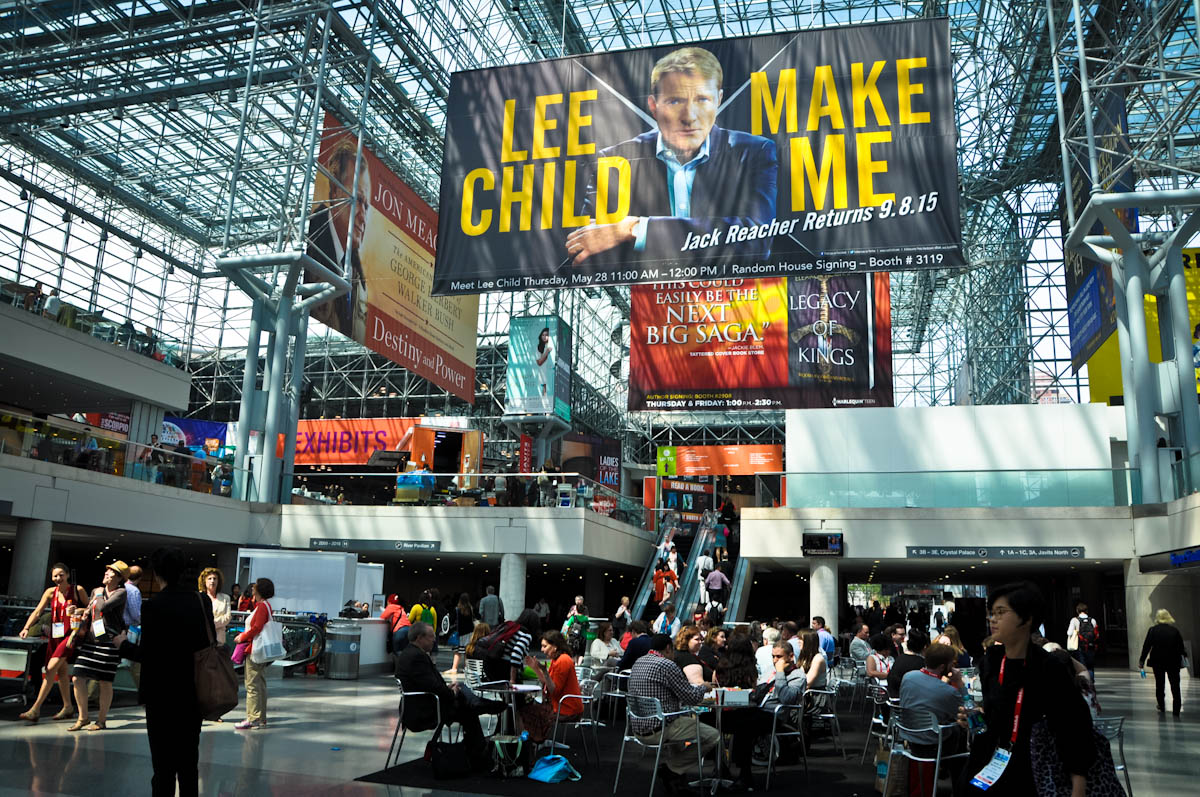 Of course, the traditional component groups at BEA, such as publishers, most of whom have slimmed down their stands, have changed their approach, adding emphasis on publicity and marketing. The ABA's programming has also shifted. While it continues to host the town and annual meetings, the Celebration of Bookselling, the booksellers lounge, it has discontinued the Day of Education--a day-long series of educational panels that are now mainly done at the Winter Institute. This year, the ABA focused again on taking advantage of the proximity to publishers, offering the second annual iteration of the Meet the Editor program, where booksellers met with editors in their offices before the show began, and the publicists speed dating program, where booksellers and publicists met in rotating format to discuss their stores and their approaches to book tours. Participants at both events praised them.
Of course, the traditional component groups at BEA, such as publishers, most of whom have slimmed down their stands, have changed their approach, adding emphasis on publicity and marketing. The ABA's programming has also shifted. While it continues to host the town and annual meetings, the Celebration of Bookselling, the booksellers lounge, it has discontinued the Day of Education--a day-long series of educational panels that are now mainly done at the Winter Institute. This year, the ABA focused again on taking advantage of the proximity to publishers, offering the second annual iteration of the Meet the Editor program, where booksellers met with editors in their offices before the show began, and the publicists speed dating program, where booksellers and publicists met in rotating format to discuss their stores and their approaches to book tours. Participants at both events praised them.
Over the years, fax, e-mail, texting, Skype and more might have taken away many of the reasons for meeting at shows--and, of course, the old rationale of placing orders--but the serendipity and importance of personal connections is invaluable. There's nothing like seeing old friends and business associates--and meeting new ones--and making connections that wouldn't have been made otherwise. Also it was a delight to meet people attending for the first or second time, who were generally thrilled to be there.
Still, the show felt sluggish much of the time. Perhaps the odd half-day opening emphasized some of the changes. Attendance was light for an opener--it was as though the floor had been opened as a kind of preview. ("Ah, this is what the place looks like before all the people come!") Traffic did pick up Thursday and Friday.
The continued shrinking of the show floor--with more "other" space added than ever--emphasized that the old model doesn't work and a new model has only partially developed. Many wondered what would have taken up the several square miles of space occupied by the Chinese exhibition if they hadn't come or had a more traditionally sized stand. A few people, particularly publishers, said they wouldn't be upset if there were no BEA. But it's hard to imagine the U.S. book industry without an annual gathering. Surely we'd miss it!
It may prove to be a big boost for the show that it's being held next year in Chicago, a wonderful venue for a trade show and convention, where we can expect more booksellers and librarians to attend--and a range of new faces from areas far from New York. There will be fewer staff members from publishers, but perhaps a new mix and some more creative thinking will enliven the event. --John Mutter



SHELFAWARENESS.1222.S1.BESTADSWEBINAR.gif)


SHELFAWARENESS.1222.T1.BESTADSWEBINAR.gif)
 Waiting for the show floor to open on Friday morning.
Waiting for the show floor to open on Friday morning.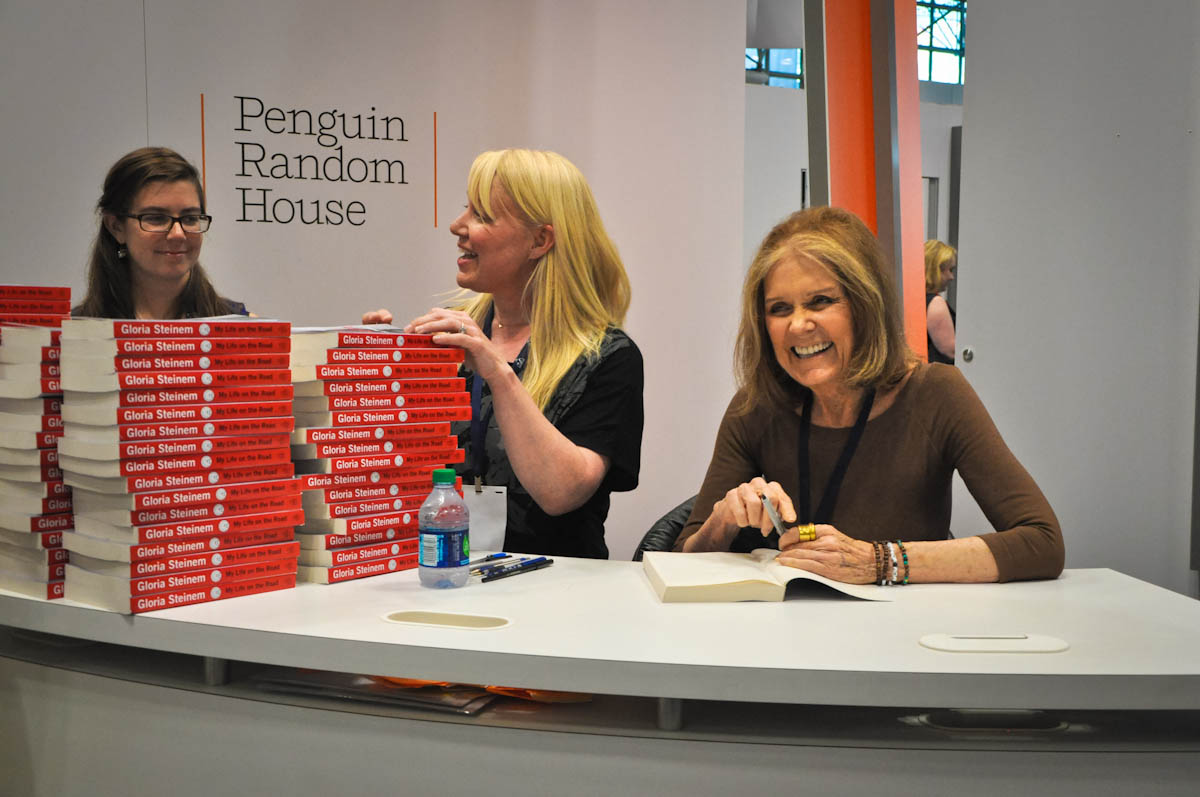 Gloria Steinem signed ARCs of My Life on the Road (Random House, Oct.) for a long line of fans on Friday afternoon.
Gloria Steinem signed ARCs of My Life on the Road (Random House, Oct.) for a long line of fans on Friday afternoon.
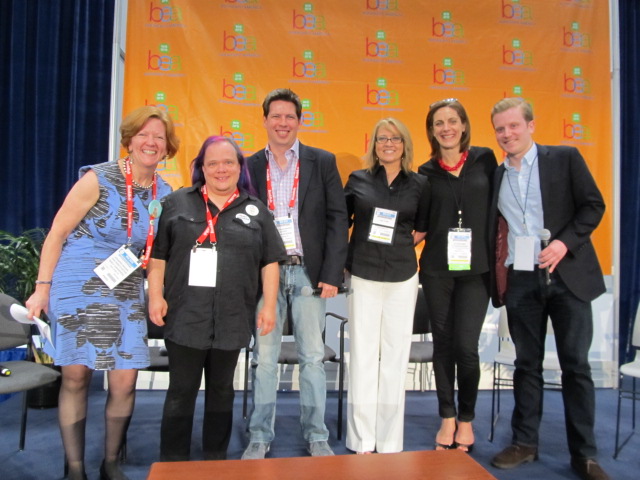
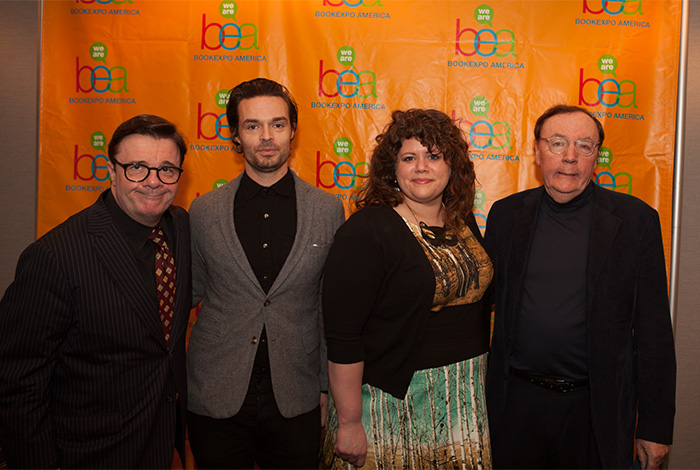
 The second annual
The second annual  In the first quarter ended May 2, revenue at Books-A-Million fell 1.9%, to $101.8 million and the net loss was $5.3 million--a slight improvement over the $5.6 million loss in the same period a year earlier.
In the first quarter ended May 2, revenue at Books-A-Million fell 1.9%, to $101.8 million and the net loss was $5.3 million--a slight improvement over the $5.6 million loss in the same period a year earlier. Effective today,
Effective today, 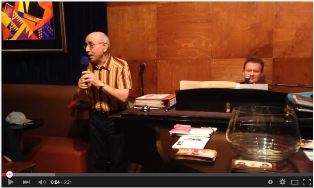
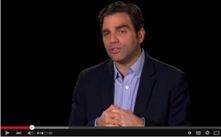 In a Dark Wood: What Dante Taught Me About Grief, Healing, and the Mysteries of Love
In a Dark Wood: What Dante Taught Me About Grief, Healing, and the Mysteries of Love "It's like a more comedic version of Wild, if Reese Witherspoon was in her 70s and also Robert Redford," Entertainment Weekly observed in showcasing a new trailer for
"It's like a more comedic version of Wild, if Reese Witherspoon was in her 70s and also Robert Redford," Entertainment Weekly observed in showcasing a new trailer for  Tod Wodicka writes again of Queens Falls, a remote community in upstate New York, in The Household Spirit. Wodicka's first novel--All Shall Be Well; and All Shall Be Well; and All Manner of Things Shall Be Well--told the story of a medieval re-enactor who travels from Queens Falls to Prague to find and reconnect with his estranged son. In The Household Spirit, Wodicka again explores the theme of parents estranged from children (and vice versa) and the universal need to belong and connect, and quirky characters who come to terms with personal history--disappointments and all.
Tod Wodicka writes again of Queens Falls, a remote community in upstate New York, in The Household Spirit. Wodicka's first novel--All Shall Be Well; and All Shall Be Well; and All Manner of Things Shall Be Well--told the story of a medieval re-enactor who travels from Queens Falls to Prague to find and reconnect with his estranged son. In The Household Spirit, Wodicka again explores the theme of parents estranged from children (and vice versa) and the universal need to belong and connect, and quirky characters who come to terms with personal history--disappointments and all.